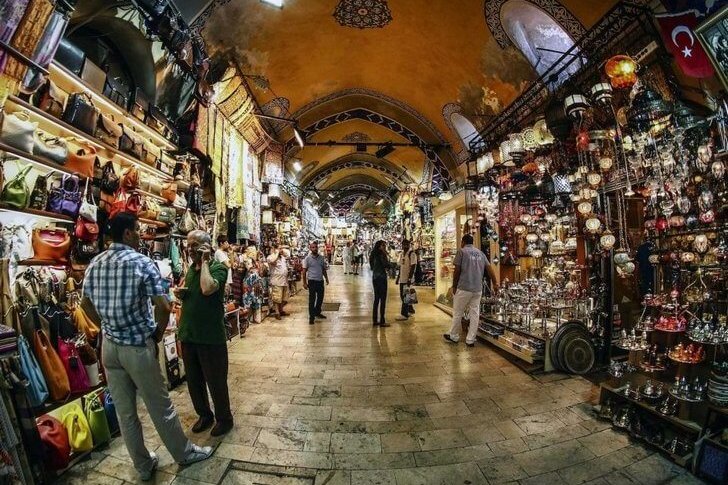Amazing and fabulous Istanbul is a bridge between two continents, a meeting place for Western and Eastern cultures and an invaluable historical heritage of all mankind. The location of the city is so fortunate that human settlements flourished here long before the advent of our era. Ancient Byzantium, pompous Constantinople and brilliant Istanbul - all these are the names of one city, lying on the picturesque banks of the Bosphorus.
In the city, a tourist will be able to see the treasures of two cultures at once - Byzantine and Ottoman. The incomparable Hagia Sophia competes in beauty with the Blue Mosque, the centuries-old secrets of the Topkana Palace are safely kept behind powerful walls, and the eastern city bazaars add color to the busy streets. All this is Istanbul: noisy, many-sided and incomparable.
What to see and where to go in Istanbul?
The most interesting and beautiful places for walking. Photos and a short description.
- Saint Sophie Cathedral
- Blue Mosque
- Suleymaniye Mosque
- Golden Horn Bay
- Bosphorus
- Galata Tower
- Maiden's Tower
- Dolmabahce Palace
- Topkapi Palace
- Beylerbey Palace
- Rumelihisar fortress
- Yildiz
- Hippodrome Square
- Taksim Square
- Istiklal street
- Church of St. Irene
- Karie Museum
- Archaeological Museum of Istanbul
- Modern Art Museum
- Miniaturk
- Aqueduct of Valens
- Basilica Cistern
- City walls of Constantinople
- Galata bridge
- Bosphorus bridge
- Haydarpasa Station
- Gulhane Park
- Jevahir shopping center
- Egyptian Bazaar
- Grand bazaar
Saint Sophie Cathedral
This unique historical monument is a masterpiece of Byzantine architecture, a symbol of the flourishing of Christianity and a witness to the fall of the Byzantine Empire. The cathedral was founded during the reign of Emperor Justinian in the 6th century AD. Over the 14 centuries of its existence, it has been destroyed and devastated several times. After the conquest of Constantinople, the temple was converted into a mosque, destroying many Christian values. At the beginning of the 20th century, the Turkish authorities decided to give Hagia Sophia the status of a museum.
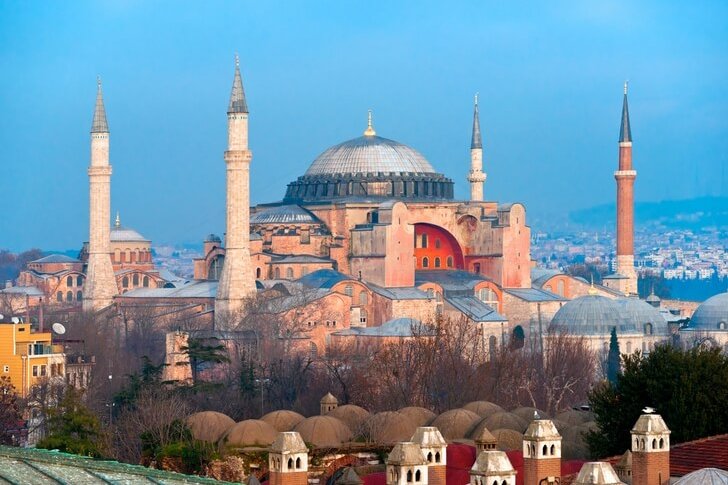
Blue Mosque
A Muslim temple erected under Sultan Ahmed I at the beginning of the 17th century. During the construction, rare and precious marbles were used. The architecture of the Blue Mosque is a harmonious combination of Ottoman and Byzantine styles, a brilliant project by Khoja Mimar Sinan Agha, who was deservedly called the “jeweler” by the people. The building is decorated with a large number of sky-colored ceramic tiles from Iznik, which is why it was called the Blue Mosque.

Suleymaniye Mosque
Another masterpiece of the architect Sinan, which has become a symbol of the power of the Ottoman Empire. After the construction was completed, the master predicted that the temple would stand forever. So far, his prophecy is true - for four centuries the building has survived several dozen serious earthquakes and survived. Suleymaniye Mosque is the largest temple in Istanbul. This is a whole complex consisting of a madrasah, baths, a library, an observatory, and prayer rooms.
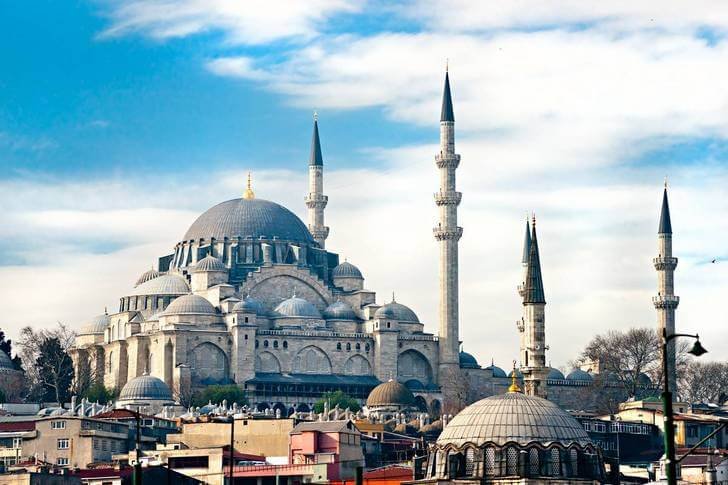
Golden Horn Bay
A strait on the Mediterranean Sea, where in the 7th century BC. a small Greek settlement was formed. Over time, it turned into the city of Byzantium, and later into Constantinople. The bay got its name due to its shape, similar to an animal horn, and the incredible beauty of the coastal landscapes. In the writings of ancient Greek scientists, the name "Horn of Byzantium" is also mentioned. In past centuries, the bay was considered an important strategic object.

Bosphorus
The Bosphorus Strait is the sea border between the Asian and European parts of Turkey, it is often called the "soul of Istanbul". Several picturesque bridges are thrown across the strait, magnificent Sultan's palaces, fortresses and ancient quarters stand on the banks. Istanbul cannot be imagined without the Bosphorus. This narrow strip of water has repeatedly become the subject of dispute between states and the arena of military clashes.
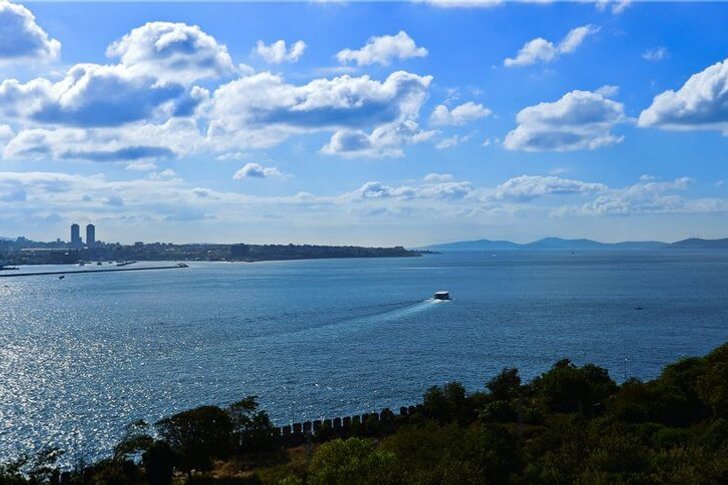
Galata Tower
The prototype of the modern stone tower was a wooden Byzantine building of the 6th century, built under the emperor Justinian. After the conquest of Byzantium by the Turks in the 15th century, the tower was used as a lighthouse, fire tower and prison. The building is located on a hill, so it is clearly visible from the streets of Istanbul. From the observation deck of the tower you can admire the picturesque architecture of the city.
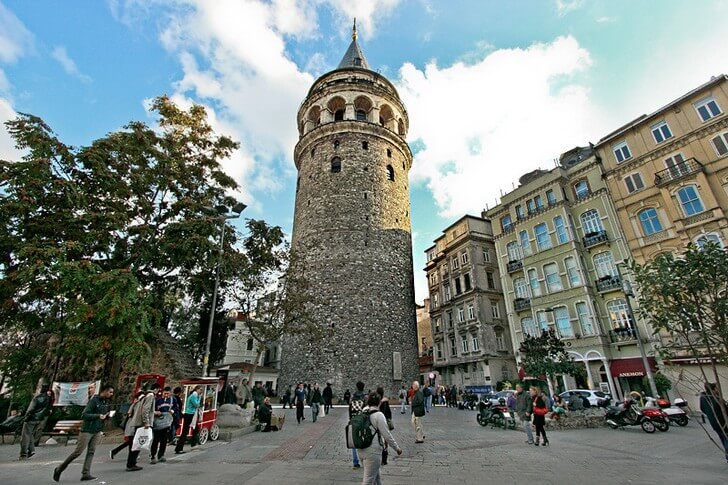
Maiden's Tower
The Maiden's Tower (Kyz Kulesi) was built in the waters of the Bosphorus on a small rocky island. It is believed that fortifications on this tiny piece of land appeared as early as 400 BC. during the war between Athens and Sparta. Under Ottoman rule, a lighthouse was built on the island. The Maiden's Tower managed to serve as a prison, an isolation ward, a utility room for the military and sailors, and an exhibition gallery. Since the end of the 20th century, an observation deck and a restaurant have been located here.

Dolmabahce Palace
The palace complex, built during the reign of Sultan Abdul-Mejid I. The ruler wanted to surpass European rulers in luxury and size, so the palace turned out to be really huge: its walls stretch for 600 meters along the Bosphorus, the total area is 45 thousand m². After the formation of the Turkish Republic, Ataturk settled in Dolmabahce on the ruins of the Ottoman Empire. After his death, the palace became a museum.
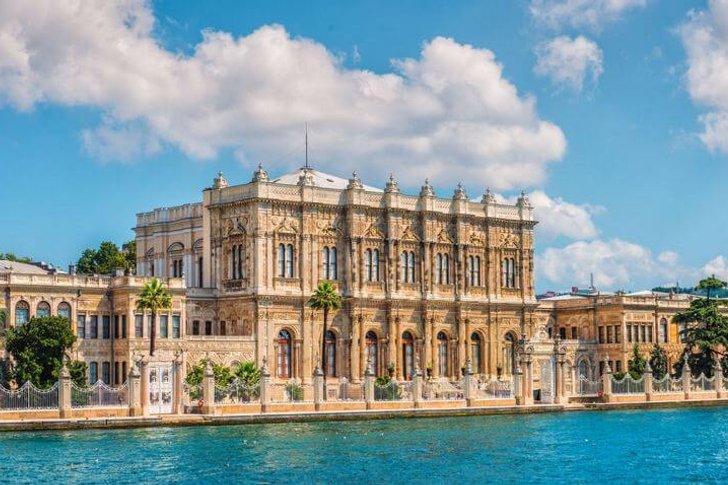
Topkapi Palace
The most famous and famous palace in Istanbul. Until the middle of the 19th century, it was the main residence of the Ottoman sultans. The complex was built on the ruins of the palace of the Byzantine emperors by order of Mehmet the Conqueror in the 15th century. Topkany is divided into four parts. Separate entrances lead to each of them: the Gate of the Lord (service and official premises), the Gate of Greeting (the office and treasury, the divan meeting room), the Gate of Bliss (inner chambers and the harem).
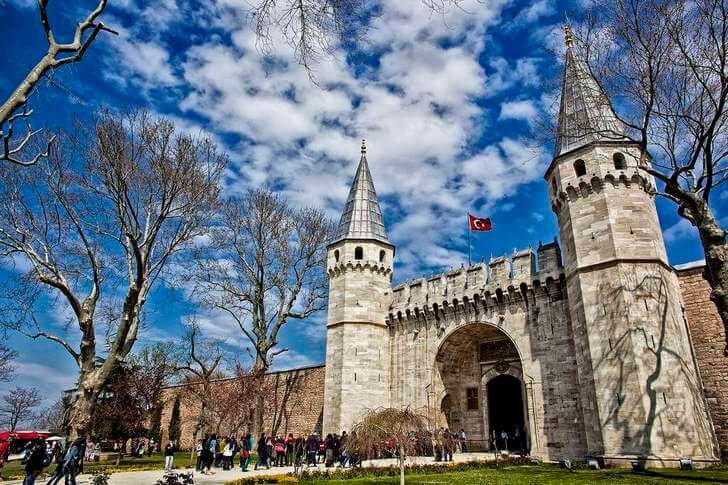
Beylerbey Palace
Baroque palace in the Asian part of Istanbul, built in the middle of the 19th century. The building was used as the summer residence of the Ottoman sultans. The interior decoration of the palace premises uses a mixture of Eastern and European traditions, which makes the interiors quite original. The layout is in typical Turkish style - courtyards, a separate pavilion for the harem and rooms for the hammam.

Rumelihisar fortress
A powerful fort on the picturesque shore of the Bosphorus, built in the 15th century under Sultan Mehmed II Fatih. The defensive walls of the fortress were erected in just a few months. Rumelihisar was built specifically for the assault on Constantinople, to cut off the city from the strait. After the fall of the Byzantine Empire, the fortress was used as a customs post. The restoration was carried out in the middle of the 20th century.
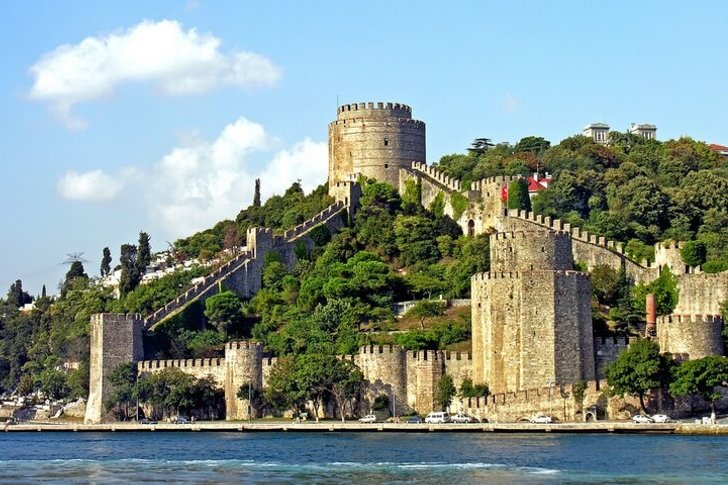
Yildiz
A picturesque palace and park complex on the coast of the Marmara Sea. First, on the site of the modern palace, a villa was built for the mother of Sultan Selim III. Yildiz is a building in which several architectural styles are embodied: European classics, baroque, oriental style. The palace is surrounded by a magnificent flowering park. Since 1994, a museum has been located on its territory.

Hippodrome Square
A place where horse races were held 2,000 years ago during the Roman Empire. During the era of the Ottoman Empire, the amphitheater on the square was dismantled, many of its fragments went to the construction of the pearl of Istanbul - the Blue Mosque. On the square there are obelisks of the Byzantine emperors Constantine Porphyrogenitus and Theodosius, as well as an ancient Greek serpentine column.
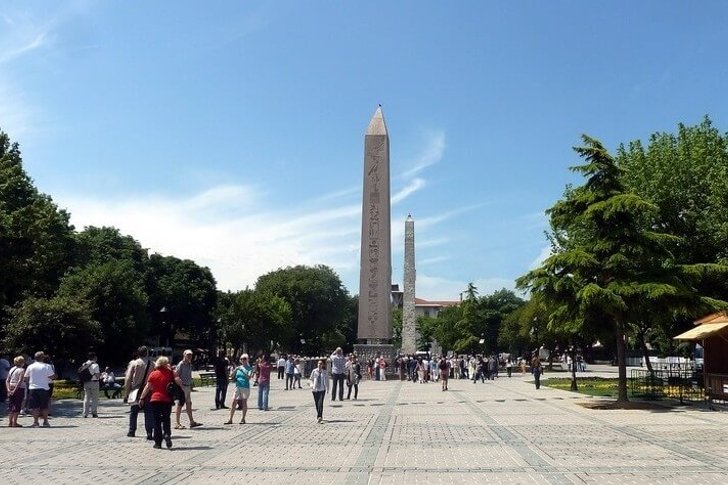
Taksim Square
The central square of the historical district of Beyoglu. It separates the old quarters of Istanbul from the new ones and serves as an important transportation hub for the city. In the center of the square is a monument erected in honor of the formation of the Turkish Republic. It consists of sculptures of military leaders Kemal Atatürk, Fevzi Çakmak, Mustafa, Ismet İnönü and other revolutionaries who contributed to the fall of the monarchy.
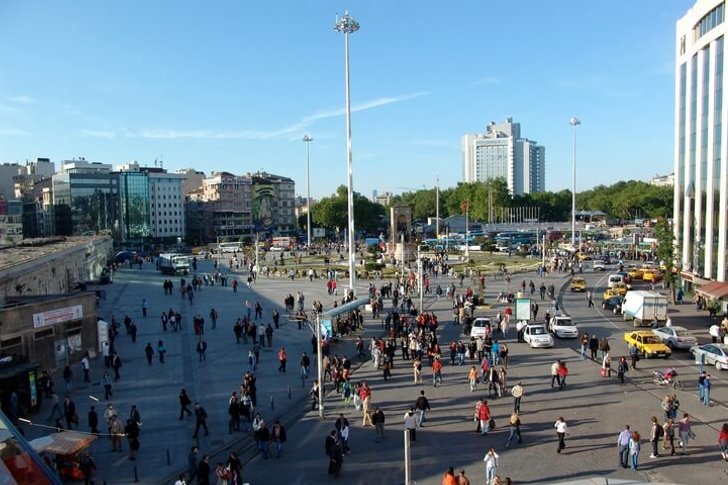
Istiklal street
Pedestrian street connecting Taksim Square and Galat district. Once this alley was the central avenue of Constantinople. The name "Istiklal" is translated from Turkish as "independence". The spirit of freedom and independence really reigns on the street. It is flooded with walking tourists, nightclubs, restaurants and inexpensive eateries. Here, one meter apart, there are temples and street performers, and modern bars side by side with traditional Turkish shops.
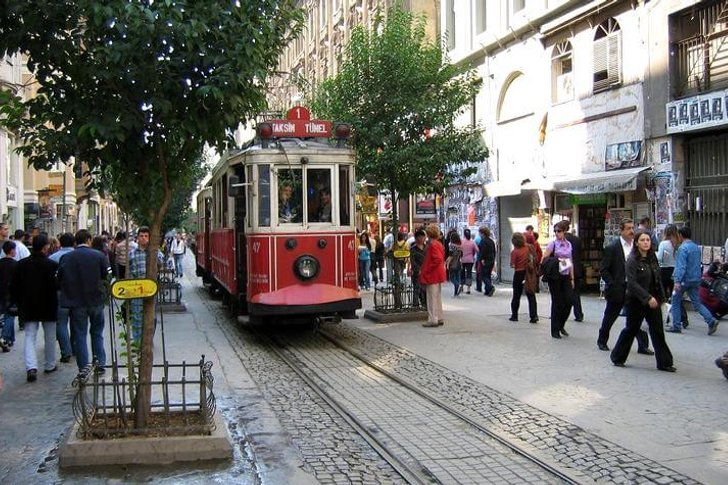
Church of St. Irene
An ancient temple in the Sultanahmet district, located in the historical center of Istanbul. It is believed that the church was built on the ruins of the ancient temple of Aphrodite in the 4th century AD. e., thus, this temple is older than Hagia Sophia. Before the appearance of the Cathedral of St. Sophia, the church of St. Irene was the main temple of Constantinople, a meeting of the Second Ecumenical Council was held here under the leadership of Emperor Theodosius I.
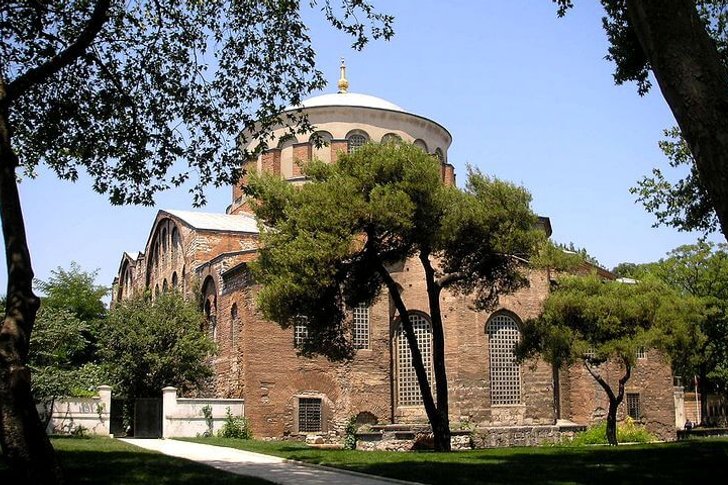
Karie Museum
Byzantine Church of Christ the Savior, this place is also known as the "Monastery of Chora". The temple was founded in the 4th century AD. e., at that time it was outside the city wall of Constantinople. Inside the building, original Byzantine mosaics and frescoes from the 11th century have been preserved, which are of great cultural value. The Kariye Museum is located in an ordinary residential area away from the main attractions.

Archaeological Museum of Istanbul
Museum, which stores unique archaeological finds that tell about the history of human development. Many exhibits were saved thanks to the ban on the export of historical monuments from the Ottoman Empire, which was introduced in 1884. The museum houses the very first recorded peace treaty in history. The complex includes three large buildings, which house more than 1 million exhibits.

Modern Art Museum
Istanbul cannot afford to fall behind European capitals, and therefore, like many of them, has its own modern art museum. The gallery opened in 2004. All sorts of exhibitions, author meetings and celebrations of contemporary artists are held in this place. The room is equipped with the latest technology, so you can often see fashionable installations here.

Miniaturk
The park is located on the shore of the Golden Horn Bay. On its territory there are models of Turkish and world attractions, made in the ratio of 1:25. In total, there are more than a hundred different figures in Miniaturk, among which are the Blue Mosque of Istanbul, Hagia Sophia, the Greek Temple of Artemis, Topkana Palace. Also in the park there is a miniature railway, an airport and a seaport.

Aqueduct of Valens
The surviving part of the ancient water supply system of Constantinople. The approximate date of construction of the aqueduct is 375 AD. The total length of the stone water pipeline was more than 550 km, the Valens aqueduct is a small segment of 1.5 km connecting two neighboring city hills. In the 7th and 8th centuries structure was repaired. The aqueduct worked successfully until the 12th century, after which it was abandoned. Under Sultan Suleiman the Magnificent, it was repaired again and began to be used to deliver water to Topkapi.
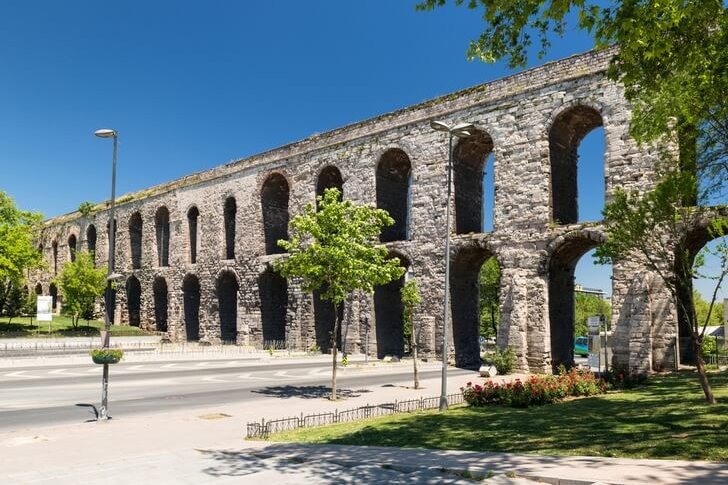
Basilica Cistern
An underground reservoir in the historical center of Istanbul, equipped at the beginning of the 4th century. The cistern served as the city's water reservoir. Water was delivered here from the Belgrade Forest through a system of aqueducts. The ceiling of the reservoir is supported by rows of marble columns, which used to be part of ancient temples. During the reign of the Ottomans, the cistern was not used, in 1987 it was cleaned and a museum was opened on the territory.

City walls of Constantinople
The defensive system of the Byzantine capital, preserved from the 5th century AD. It was erected to protect the city from the raids of barbarian tribes. The walls have survived to this day in good condition largely thanks to the Ottoman conquerors. After the conquest of Constantinople, they restored all the buildings. In the first half of the 20th century, the walls began to be dismantled, but in the 80s. decision was made to rebuild.
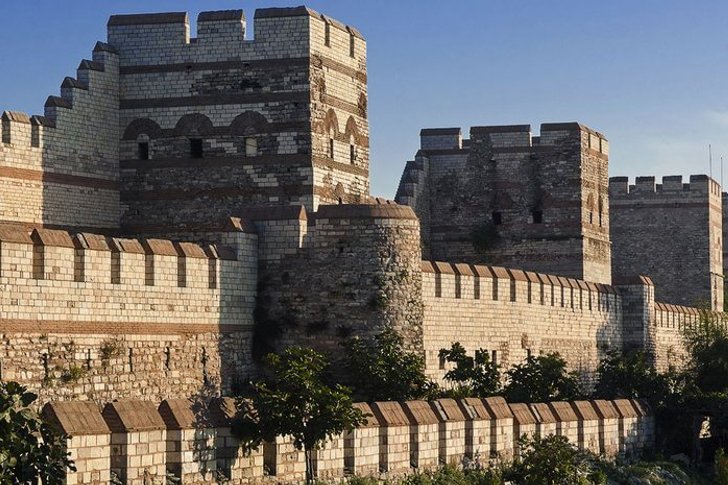
Galata bridge
Bridge across the Golden Horn. The structure was built in the middle of the 19th century under the ruler Abdul-Mecid I. Another common name for the structure is the “Valide Bridge”, since the mother of the Sultan took an active part in the construction. The bridge survived five reconstructions, in 2005 tram tracks were laid across it.

bosphorus bridge
A modern suspension bridge across the Bosphorus, solemnly opened in 1973 in the presence of the President and Prime Minister of the Republic of Turkey. The structure is supported by two metal towers located at a distance of about 1 km. from each other. The total length of the bridge is 1560 meters. In the evening, multi-colored lights are turned on, painting the bridge in bright colors. In the most loaded hours, the structure sags by 90 cm.

Haydarpasa Station
A grandiose project of German architects of the early 20th century. It was assumed that the station would become a major railway junction connecting the Ottoman Empire with Damascus, Cairo, Jerusalem and Medina. But History decreed otherwise - the empire fell, and a more modest role was prepared for Haydarpash. Now the station serves internal eastern routes to the borders with Iran, Armenia and Syria.
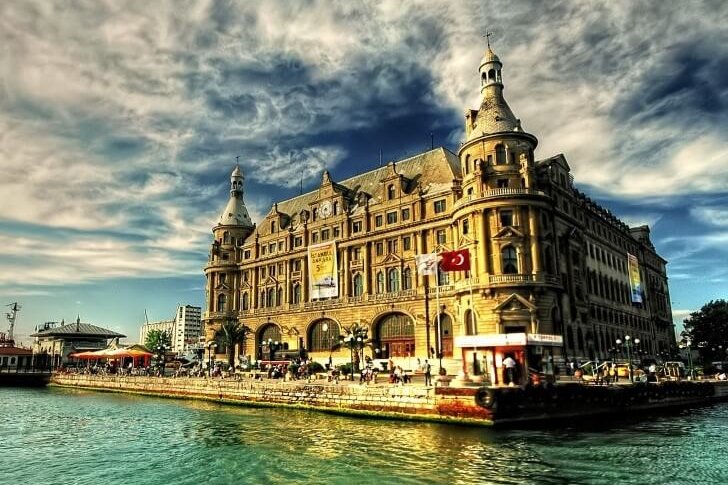
Gulhane Park
A city park designed for walking and relaxing from the summer heat of Istanbul. It is famous for a large number of pink flower beds, which have been preserved since the Sultan's times. Once Gulhane was part of the palace complex, only the ruler and courtiers had the right to walk in the park. At the end of the 19th century, it was open to everyone. On the territory there is a large playground, a cafe, a small zoo and an aquarium.
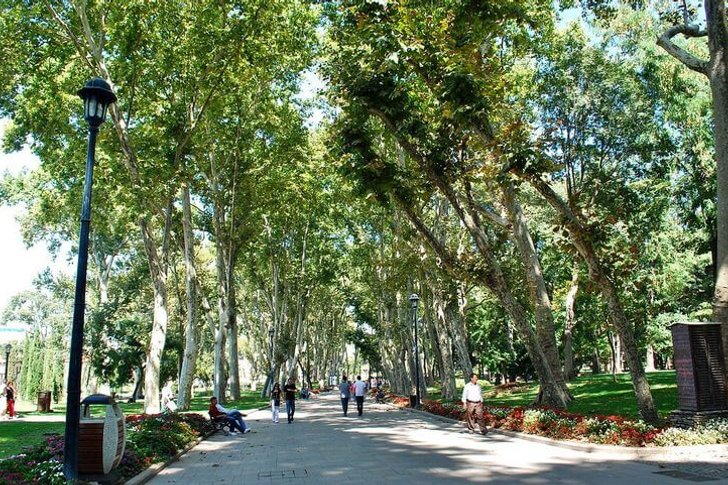
Jevahir shopping center
The best place for shopping and the sixth largest mall in the world. About 400 shops, dozens of cafes and restaurants are located on 6 floors. As in the leading European capitals, here you can find products of all the most famous and well-known global brands, from democratic brands to designer houses. There is an amusement park in the underground part of the building.
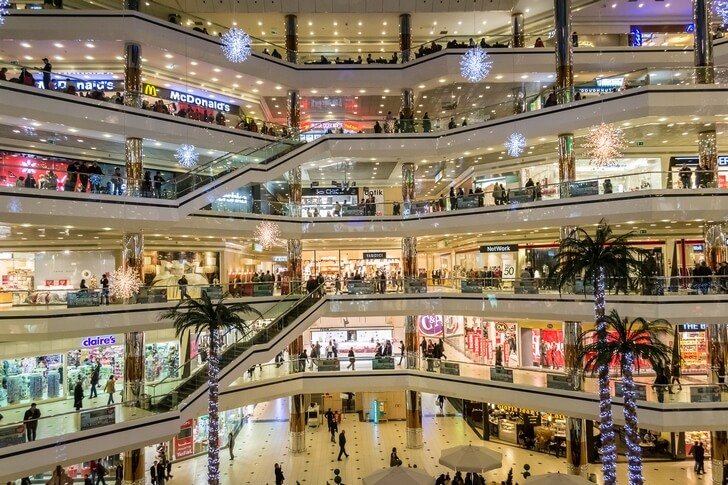
Egyptian Bazaar
A traditional oriental bazaar where sellers can communicate with buyers in many languages. Previously, goods brought from the East were sold here: spices, herbs, medicines. Nowadays, the bazaar is more focused on tourists, so a significant part of its area is occupied by souvenir shops. Also here you can buy interesting jewelry, dishes, fabrics and carpets, oriental sweets.

grand bazaar
The largest indoor market in the world, covering an area of 3.7 thousand m². This is a whole "city within a city" with its own way of life, rhythm of life and laws. The bazaar consists of 66 streets and 4 thousand shops and stores. There are mosques, a school, a bathhouse, cafes, currency exchange offices and numerous warehouses. Several tens of thousands of people visit the bazaar every day. The marketplace appeared in the 15th century immediately after the capture of Constantinople on the site of the old Byzantine market.
